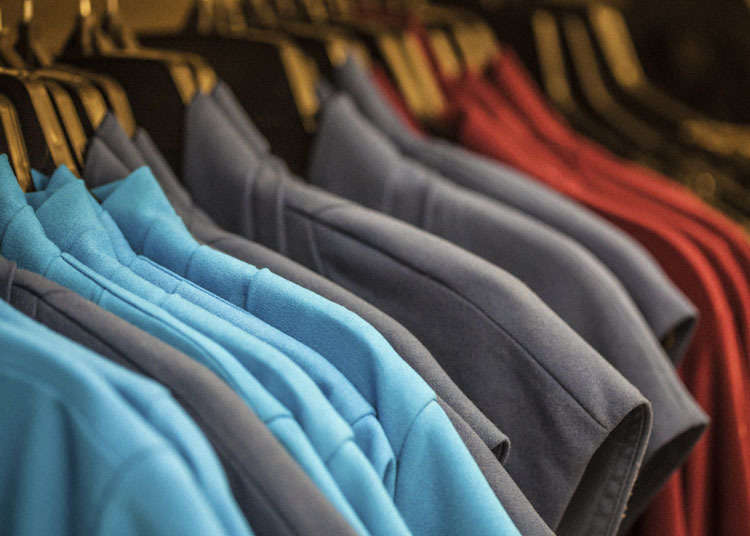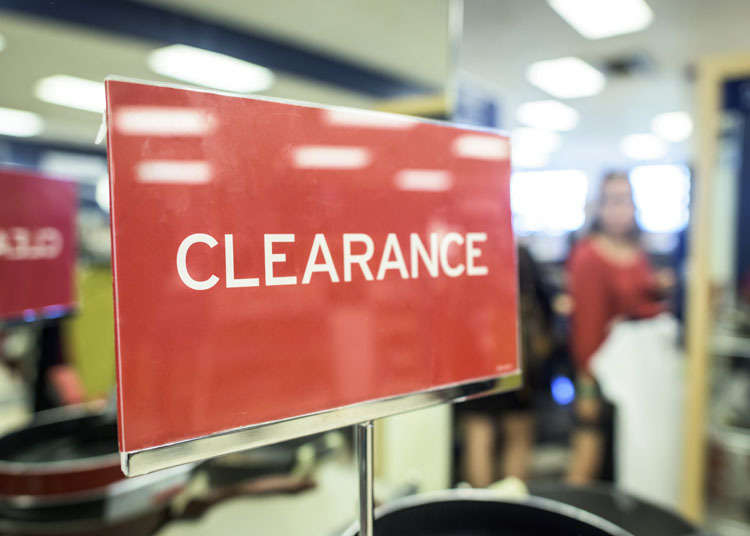
Discount stores sell a broad variety of items such as food, daily commodities, home appliances, and clothing. The prices, as well as the wide selection of products help Japanese people a lot on a daily basis.
The history of Japanese discount stores

The first discount stores appeared in 1970's and were specialty stores selling home appliances or eye-wear at low prices. Since then, this type of retailer has undergone substantial development. Large-scale discount stores selling a wide range of products started business in the 1990's. Nationwide discount store chains promoting super-low prices became popular and created a boom.
Products available at discount stores

The types of items stocked may vary depending on the store, but they generally handle a wide variety of products such as food, clothing, and daily commodities. The stores of famous nationwide chains often offer home appliances, designer accessories and bags, and famous brand watches at low prices. Some stores sell home party supplies and cosplay costumes. On Halloween (October 31st), many young people in Japan dress up in costumes and go out on the town. Discount stores are a popular place to purchase those outfits.
Features of discount stores

Most large-scale discount stores operate the business in a multi-story building. They handle a variety of items and each floor is allocated to a specific product category such as groceries and home appliances. Some discount chains open branches in metropolitan centers of big cities like Tokyo, but in other local areas, their stores are usually on large sites located along busy suburban roads.
Discount store in-store displays (POP)

In a typical discount store the products are packed onto the shelves. One famous chain store puts many products on the floor, making the path for customers narrow and complicated. They often display cards called POP next to products. Staff members write product prices and descriptions, as well as their recommendations on the POP cards by hand. The POP cards feature unique designs and fonts. Some stores hire professional artists to create their POP cards.
- Category
*Prices and options mentioned are subject to change.
*Unless stated otherwise, all prices include tax.
Recommended places for you
-

Kanzenkoshitsuyakinikutabehodai Gyugyu Paradise Sannomiya
Yakiniku
Kobe, Sannomiya, Kitano
-

Kambei Sannomiyahonten
Yakiniku
Kobe, Sannomiya, Kitano
-

ISHIDAYA Hanare
Yakiniku
Kobe, Sannomiya, Kitano
-
Appealing

Rukku and Uohei
Izakaya
Sapporo / Chitose
-

Jukuseiniku-to Namamottsuarera Nikubaru Italian Nikutaria Sannomiya
Izakaya
Kobe, Sannomiya, Kitano
-
Goods

Yoshida Gennojo-Roho Kyoto Buddhist Altars
Gift Shops
Nijo Castle, Kyoto Imperial Palace
-

23 Quirky and Fun Things to Do in Akihabara
by: Himanshi Shah
-

Stay with Snorlax? Grand Hyatt Tokyo's Summer Pokémon Resort Experience Is the Ultimate Sleepover
-

A Don Quijote Like No Other: Step Inside the All-New Tourist-Friendly Store at Shinjuku Tonanguchi Bekkan (Open June 13)
by: Chehui Peh
-

Tokyo's Top Electronics Stores: Find Your Perfect Store by Purpose & Style (Major Retailers, Gaming, Cameras & More)
by: Ran Tanaka
-

Police to ticket cyclists riding on sidewalks, which amounts to almost all cyclists in Japan
-

'Is It Really Clean If...' 10 Things That Shocked an American Woman About Japan
-

Top 5 Tasty Japanese Snack Packs From Ameyoko's Niki No Kashi!
-

The Manager Recommends: Don Quijote's Most Delicious Sweets!
-

An Exciting Nocturnal Shopping Experience! New Night-time Don Quijote Opens in Susukino, Sapporo
-

5 Amazing Kyoto Festivals You’ll Want to Experience During Your Next Trip
-

Hoshinoya Kyoto: This Incredible Japanese Hotel Welcomes You By Boat on a Sakura-Filled River
-

20 Hokkaido Souvenirs to Buy in Sapporo: Selected by Hokkaido Travel Experts at MEGA Donki! (2024 Version)
by: Nobuka Kawashima
- #best sushi japan
- #what to do in odaiba
- #what to bring to japan
- #new years in tokyo
- #best ramen japan
- #what to buy in ameyoko
- #japanese nail trends
- #things to do japan
- #onsen tattoo friendly tokyo
- #daiso
- #best coffee japan
- #best japanese soft drinks
- #best yakiniku japan
- #japanese fashion culture
- #japanese convenience store snacks













